Warning: picture-heavy post!
So eager was I to see Hong Kong Museum of History’s exhibition about the qipao (also known as cheongsam), my boyfriend and I showed up a month early and trotted along to the special exhibition hall on the ground floor – only to discover a display about some ancient Chinese tribe instead. Yawn. Whilst my history geek boyfriend was delighted that we got to spend a lazy day in the regular exhibition (The Hong Kong Story – review of that here), it gave us a chance to scope out the space that the qipao would be shown in – and we weren’t impressed. It seemed small, cramped and my boyfriend predicted that we’d be in and out within an hour. How wrong he was!
Having managed to turn up in the right month, The Evergreen Classic: The Transformation of the Qipao proved to be a stunning surprise. I had worried that it would pale in comparison with the wonderful couture exhibition (loaned from The V&A) at The Heritage Museum last year; in some ways, it managed to be better. Some 280 qipao, of all shapes, sizes, colours and textures were displayed (apparently, some with waists so tiny that custom-made mannequins had to be ordered in!), with the exhibition flowing along nicely as it detailed the evolution of the qipao from its origins in the 17th century to the modern designs we’re now more familiar with – and, despite the amount of dresses, as well as information boards, 400 pictures and videos, it didn’t feel cluttered, cramped or messy. The best part – you could really get up close to the dresses (only the oldest were displayed behind glass), marvel at the exquisite detailing and take lots and lots and lots of photos! All things you couldn’t do at the couture exhibition, in case you’re wondering.
So what did we learn? The qipao originated amongst the Manchu nobility of the Qing Dynasty in China, where they were long, wide and loose. Looking oddly unisex in appearance, with only fingers and the tips of the toes visible, it wasn’t exactly flattering to the female form! Even so, the detailing, embroidery and vivid colours and patterns are beautiful today, hundreds of years later.
Gradually, the form moved with the times – the dress became shorter, the fit became tighter, the famous Mandarin-style collars got higher, short bell sleeves became popular and slits were introduced to make walking easier (and show off some skin!).
Between the 1920s and 1960s, various elements came and went according to fashion – long or short skirts, plain or patterned, revealing slits, one or two pieces (like a tailored suit), being worn with Western-style fur capes or cardigans – all these trends came and went depending on whatever was “in” at the time. As with everything great and good in the world, the Chinese communists attempted to ban it – it’s figure-hugging form doubtlessly decreed too sexy for their austere tastes.
As women entered the workforce and discovered the need for more practical clothing, the tight-fitting qipao fell out of favour, making way for comfortable outfits from the West, although it survived as everyday dress in Hong Kong for a little longer, until the 1970s. Nowadays, the cheongsam is mostly famous as a national dress, worn by Asian beauty contestants, waitresses in Chinese restaurants, students at old-fashioned schools and Oriental stereotypes in movies. However, elements of design still live on in many modern garments and contemporary designers constantly play about with the form to create new, inventive takes on the qipao – with the Museum of History commissioning Hong Kong Polytechnic’s Institute of Textiles and Clothing to create some pieces for the show.
As you can see, I have dealt with the history of the qipao in a few short paragraphs and although the information boards provide a running commentary, the dresses practically speak for themselves. Because there is such little relevant information, reading these boards quickly becomes repetitive and boring, especially towards the end where there’s only so much you can write about a waitress’ uniform or a Miss Hong Kong costume. But skip these at your peril – they often include fascinating photographs, whether of the strange Manchu people with their hair piled high in some precursor to Princess Leia or more contemporary images, showing glamorous Chinese women in qipao with film-starlet hair and art-deco styling.
I was also disappointed that the exhibition failed to make much of the qipao’s strong showing in films. In the 1960s, The World of Suzie Wong and its qipao-clad star Nancy Kwan made a strong cultural impact, making the cheongsam fashionable amongst Westerners – the name Suzie Wong is still a cultural checkpoint today. More recently, in Wong Kar-Wai’s multi award-winning In The Mood For Love, Maggie Cheung wears a different custom-made cheongsam in each scene (46 in total). It’s not just for beauty’s sake either – the outfits deliberately play into Kar-Wai’s sensual evocation of mood and time, whilst the constricting nature of the cheongsam is symbolic of the theme of the moral and social restrictions placed upon the characters. It would have been nice if The Evergreen Classic had acknowledged the impact of these films on the qipao and its place in the Western mindset, with stills and video clips even if they couldn’t get hold of the costumes themselves.
But these are minor quibbles – seeing the qipao up close, in all their glorious intricate detail, is just breathtaking. You can see the fragility of the fabrics, how the striking embroidered buttons often mirror an element of the pattern, the individual stitches on the sleeves. Amazing stuff. I guess the average person, owing to their exposure to the cheongsam in its more traditional forms, views the qipao as a timeless classic yet it’s fun to see how it adopted the fads and trends of the time – especially in the 60s and 70s, where some of the garish patterns are just as headachingly horrid as they are on Western clothes!
I also loved the modern constructions near the end (like the one shown earlier being fingered by a visitor), although some of these felt like advertorials for their designers. The ones above were some of those designed by PolyU – the one on the left reminds me of something Vivienne Westwood would design (cutesy gingham print combined with the rock edge given by the back detail) whilst the ones on the right, entitled ‘Deconstruction of the Qipao’, look fit for Xena: Warrior Princess! I love how the designer has taken elements of the qipao, like the collar or the typical floral embroidery, and transformed into something totally new and modern. It would be amazing to see these kind of dresses on the red carpet, whether on Chinese or Western stars, or as stage outfits for some of the more outlandish performers out there (need I mention Gaga?!) – the quality, workmanship and sheer show-stopping quality of these outfits had needs to be seen to be believed.
Only one question remains – why oh why hasn’t a catalogue been produced? And, since it ends on 13 September, why oh why haven’t you been there yet?! [Although a lot of the pieces are on loan from real people, I’m hoping a more permanent form of this exhibition eventually makes it to The Heritage Museum – you’d best be reading LCSD!] For just $10 (and that includes the main exhibition as well), it’s a must for anyone who basically appreciates nice stuff. My boyfriend’s not into fashion at all (as his wardrobe attests, ho ho) but even he seemed to enjoy it. Go forth and qipao! And if it’s too late… here’s a few dozen of my best photos to make up for it (click for enlargements).
P.S. My favourites were from the 1950s and 60s, so there may be a slight bias. Apologies, fans of ye olde qipao.
 Collar detail on some of the older qipao
Collar detail on some of the older qipao
 Love how glam these Shangainese girls look – traditional clothes but hair and make-up that would make any 1930s Hollywood starlet proud. And check out those cheeky side-slits!
Love how glam these Shangainese girls look – traditional clothes but hair and make-up that would make any 1930s Hollywood starlet proud. And check out those cheeky side-slits!
 Both red (it’s our lucky colour after all) but look at the contrast between old and new – from loose to fitted,via tailored business suit and seemingly Art-Deco print.
Both red (it’s our lucky colour after all) but look at the contrast between old and new – from loose to fitted,via tailored business suit and seemingly Art-Deco print.


 These were my favourite qipao of the exhibition; they belonged to 1950s’ HK film star, Lin Dai. The photo does not do the black cheongsam in the first picture justice – up close, you can see the lace embroidery overlay and its a subtly elegantly sexy effect. The design and prints of these are so clean and simple that they still look amazing today.
These were my favourite qipao of the exhibition; they belonged to 1950s’ HK film star, Lin Dai. The photo does not do the black cheongsam in the first picture justice – up close, you can see the lace embroidery overlay and its a subtly elegantly sexy effect. The design and prints of these are so clean and simple that they still look amazing today.


 Put your sunglasses on! As I mentioned, some of the prints are very ‘of their time’ i.e. hideous now (ok, the blue florals aren’t too bad – they just look like china and give me a bit of a headache). But the detail is still gorgeous up-close.
Put your sunglasses on! As I mentioned, some of the prints are very ‘of their time’ i.e. hideous now (ok, the blue florals aren’t too bad – they just look like china and give me a bit of a headache). But the detail is still gorgeous up-close.
 No such prints on the school uniforms! Apparently, a lot of students who have these uniforms complain vociferously about it – and once you’ve had a tight Mandarin collar round your neck in a typical HK summer, you’ll understand why!
No such prints on the school uniforms! Apparently, a lot of students who have these uniforms complain vociferously about it – and once you’ve had a tight Mandarin collar round your neck in a typical HK summer, you’ll understand why!
 Close-ups of the button clasps used at the collar.
Close-ups of the button clasps used at the collar.
 I love these photos. They ‘capture a moment’ – a time when the cheongsam was everyday wear in HK.
I love these photos. They ‘capture a moment’ – a time when the cheongsam was everyday wear in HK.


 I guess these are the simpler kind of qipao you could imagine for everyday wear – but even then, the lace embroidery is still so beautiful and complex up close. I’d be constantly worried about damaging them at work!
I guess these are the simpler kind of qipao you could imagine for everyday wear – but even then, the lace embroidery is still so beautiful and complex up close. I’d be constantly worried about damaging them at work!
 I’m a big fan of fashion sketches and found these fascinating – they’ve been drawn in that typical 50s’ style and show how the Chinese woman could Western up her outfit with a cardigan, fur wrap or jacket. It’s really unusual to see obviously Asian women being drawn in fashion sketches as well, rather than just a generic silhouette.
I’m a big fan of fashion sketches and found these fascinating – they’ve been drawn in that typical 50s’ style and show how the Chinese woman could Western up her outfit with a cardigan, fur wrap or jacket. It’s really unusual to see obviously Asian women being drawn in fashion sketches as well, rather than just a generic silhouette.
 From just looking at these, you’d say 1970s right?! The frilly sleeves on the left are a new detail and the one on the right reminds of the classic Missoni print and colours, matched with the green contour lines, which are reminiscent of the whole Christopher Kane body-con thing that is happening now.
From just looking at these, you’d say 1970s right?! The frilly sleeves on the left are a new detail and the one on the right reminds of the classic Missoni print and colours, matched with the green contour lines, which are reminiscent of the whole Christopher Kane body-con thing that is happening now.
 I imagine the ones on the left are more for evening wear – the midnight blue one with the sprig of glittery embellishment just looks so sleek and modern, it’s unbelievable it was made decades ago! I liked the one on the right just because the print was so subtle (squint hard to see it!) yet really lovely, fresh and youthful.
I imagine the ones on the left are more for evening wear – the midnight blue one with the sprig of glittery embellishment just looks so sleek and modern, it’s unbelievable it was made decades ago! I liked the one on the right just because the print was so subtle (squint hard to see it!) yet really lovely, fresh and youthful.

 I’m also a fan of these retro drawings of stylish qipao-clad ladies that were often used in advertising in the 1930s (famous now for featuring on the Two Girls line of toiletries and cosmetics products). It’s something that the HK Museum of History has capitalised on with this very clever series of adverts, showing these traditional drawings alongside modern qipao, which look very like the ones in the pictures, that are part of the exhibit.
I’m also a fan of these retro drawings of stylish qipao-clad ladies that were often used in advertising in the 1930s (famous now for featuring on the Two Girls line of toiletries and cosmetics products). It’s something that the HK Museum of History has capitalised on with this very clever series of adverts, showing these traditional drawings alongside modern qipao, which look very like the ones in the pictures, that are part of the exhibit.
 The dress on the left was worn by Michelle Yeoh at the 2002 Cannes Film Festival – a beautiful, fluid, elegant take on the qipao (love how the lines of colours emphasise the shape of the body). The middle one was worn by HK film star Josephine Siao in the 1970s – the traditional embroidered borders were taken from her mother’s collection from the 1930s! And I just liked the watercolour-style print of the one on the right, ok?!
The dress on the left was worn by Michelle Yeoh at the 2002 Cannes Film Festival – a beautiful, fluid, elegant take on the qipao (love how the lines of colours emphasise the shape of the body). The middle one was worn by HK film star Josephine Siao in the 1970s – the traditional embroidered borders were taken from her mother’s collection from the 1930s! And I just liked the watercolour-style print of the one on the right, ok?!
 Occasion-wear qipao! The one on the right was worn by hostesses at the 2008 Beijing Olympics Opening Ceremony (red and gold, classic combination!). I believe the one on the left was Siao’s wedding dress – it’s interesting that the typical qipao details are not on the dress itself but on the cape thing over it – and the cute flower appliques on the (bridesmaid’s?) dress are so pretty!
Occasion-wear qipao! The one on the right was worn by hostesses at the 2008 Beijing Olympics Opening Ceremony (red and gold, classic combination!). I believe the one on the left was Siao’s wedding dress – it’s interesting that the typical qipao details are not on the dress itself but on the cape thing over it – and the cute flower appliques on the (bridesmaid’s?) dress are so pretty!
 The qipao worn by Miss Hong Kong 1977, Loletta Chu. Beautiful unusual colour and floral design – definitely a stand-out at the exhibition.
The qipao worn by Miss Hong Kong 1977, Loletta Chu. Beautiful unusual colour and floral design – definitely a stand-out at the exhibition.
 This is where it gets fun, as modern designers try and put contemporary twists on the qipao whilst remaining true to the design. I think these were stage costumes for one of HK pop queen, Anita Mui’s, concerts. That cape design on the far left is so gorgeous and wintry feeling, the floral design of the second one is composed of thousands of beads (probably pain-stakingly sewn on by hand!) and the leaf detail on the other one is actually rather risque – it’s see-through! The one on the far right, again with some transparent details, is designed by Blanc de Chine and the rest may well be too but I can’t remember.
This is where it gets fun, as modern designers try and put contemporary twists on the qipao whilst remaining true to the design. I think these were stage costumes for one of HK pop queen, Anita Mui’s, concerts. That cape design on the far left is so gorgeous and wintry feeling, the floral design of the second one is composed of thousands of beads (probably pain-stakingly sewn on by hand!) and the leaf detail on the other one is actually rather risque – it’s see-through! The one on the far right, again with some transparent details, is designed by Blanc de Chine and the rest may well be too but I can’t remember.

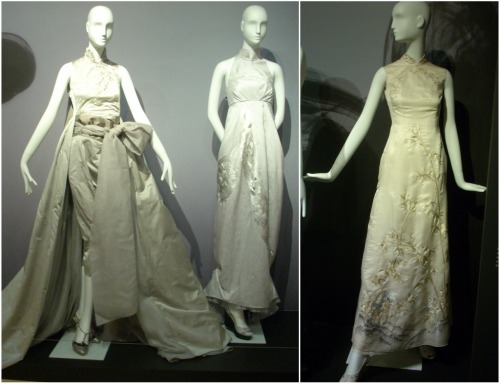
 More modern qipaos, with some close-ups of the stunning details (far right is of the train of one of the dresses). I think these would make amazing wedding dresses.
More modern qipaos, with some close-ups of the stunning details (far right is of the train of one of the dresses). I think these would make amazing wedding dresses.
And after all those photos, I hope your brower’s still working!
The Evergreen Classic: The Transformation of the Qipao is on at the Special Exhibition Gallery (on the ground floor), Hong Kong Museum of History, 23 June-13 September, 2010, $10 per person. 100 Chatham Road South, Tsim Sha Tsui, Kowloon, 2724 9402.
Exhibition pamphlet available here.
All photos taken by me or from the museum’s website.
After the exhibition has finished, you may be able to find some of the qipao either in the museum’s regular exhibition or at The Heritage Museum in Shatin.

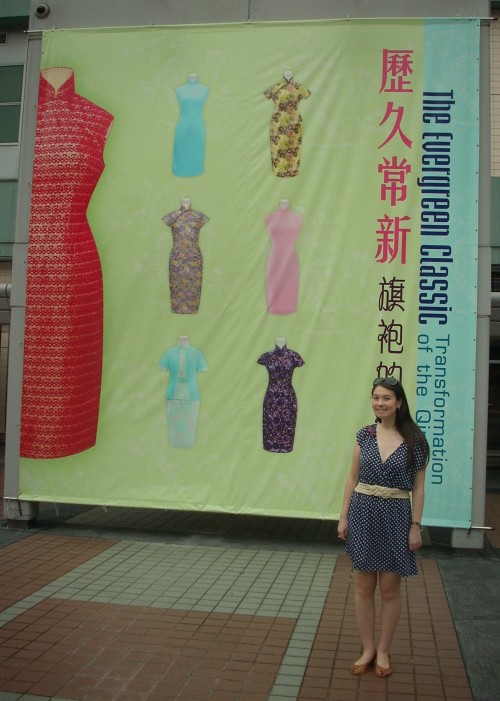





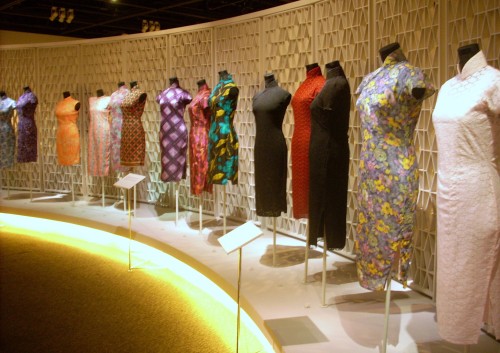









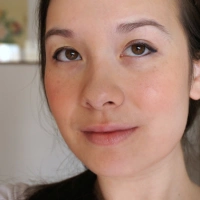
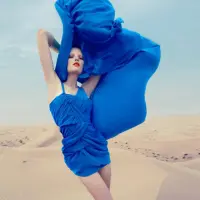

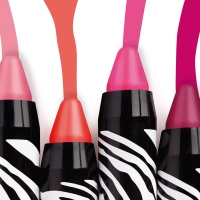
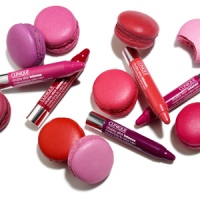

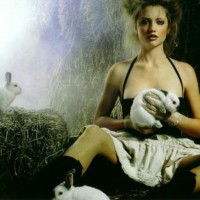
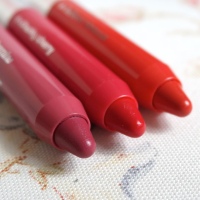

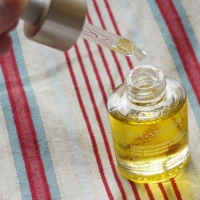
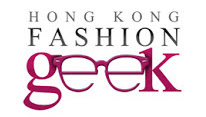


Thanks for posting all these gorgeous pictures! This is an exhibit I would totally go see if I was in HK. Love the qipao. I need to get one — they’re so sexy!
First of all, great looking site you have here and great post too. I would like to keep up with your posts but having problem subscribing to your rss.
Thanks for your comments about the site!
Regarding RSS, there’s a silver button in the sidebar under ‘Keep Up!’ to click on that should subscribe you to posts. It worked when I tried but let me know if you have any more problems!
love those cheongsam you’ve taken, lovely!
I saw “in the mood for love” (Wong Kar-Wei, 2000) and I was fascinated by Maggie Cheung’s quipaos. Because I am a tailor, I searched in the net for more informations about this dress. Where ist the zipper??? 😉
Thank you for your great article! It gives me lot of informations and ideas about how to sew a quipao.
Thanks for the kind comments Susanne – and good luck with the qipao making!
Thank you for a brilliant post! As a Qipao lover I would have loved to have gone to this exhibition if I was in Hong Kong…let’s hope the V&A would borrow some Qipao for an exhibition in London one day! Loved all those utterly beautiful photographs you took of those amazing garments! Have a fabulous weekend!
May x
http://www.walkinginmay.blogspot.com
http://www.facebook.com/walking.in.may.blogspot
Thanks for the love May – glad to share the beauty for those that couldn’t see the exhibition in person! Fingers crossed they’ll be a swap with the V&A as there’s plenty from that museum I’d love to see over here 🙂
Thanks a lot for sharing this with us, was a really interesting post.
Some clothing are beautiful and some clothing are expensive, we always called them fashion. But I think the real fashion, for me, is an attitude for life and belief. Handmade is a way to experience and to achieve this attitude. Classics are the results of this attitude, and they also can let the attitude pass down. Something precious is not only because it has a visual shock, what more important are because it shows the culture, it has something inside, and it was created by the maker’s wise, hardworking, and the acme of arts and crafts.
Thank you for your article!!
Pingback: Ein Schnitt - tausend Kleider - Spitz Maßdesign
Well, gee, with your fear of insects and getting your hands dirty, you’re not the kind of person I’d want to meet at all, oh, er, unless you were wearing a qipao and we could enjoy desert together. Seriously, you totally nailed it with this review of the HK Museum’s exhibit. Thanks for the great pics and insights into this eloquent icon of Chinese material culture.
Thanks for reading – glad you enjoyed the post!